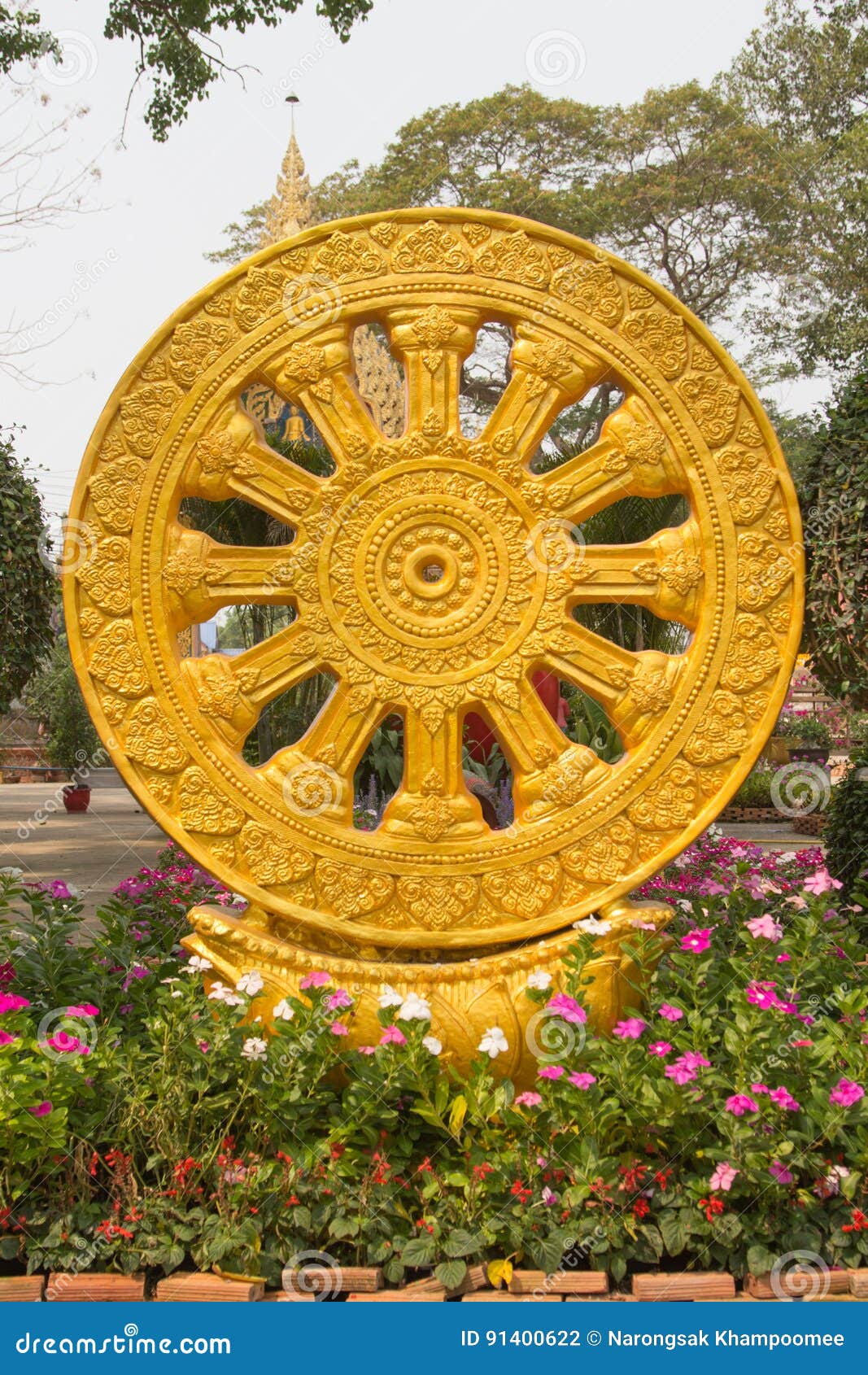
THE WHEEL OF DHARMA IN DIFFERENT CULTURES HINDUISM This can be seen in the images of Buddha as they appear on his hands and feet - depicting one of the Marks of a Great Man. Today, the Dharma wheel is represented in art within different Buddhist cultures. In 1947, the Ashoka chakra became part of the Indian flag. However, the Dharma Wheel appeared in Indian artwork before the reign of Ashoka the Great.These Dharma wheels also had twenty-four spokes and appeared to rest on four lions that sat back to back as they each faced one of the four cardinal points Ashoka Chakras, Dharma wheels with twenty-four spokes, can be found on these pillars. Several of the pillars he built are still standing today and represent various edicts that encouraged his people to practice Buddhism, without ever forcing them. He reigned over India and followed the teachings of Buddhism. One of the oldest representations of the Dharma Wheel as a symbol has been found on the pillars which were built by Emperor Ashoka between 304 and 232 BC. Together, the three aspects of the Dharma Wheel symbolize focus, ethics and wisdom - all of which are essential in the teachings of the Buddha. These teachings have been described as a wheel because they move and travel across the land and people can then exercise control over their minds. When one practices Dharma, one practices the teachings of the Buddha, one protects oneself from suffering and one eliminates ignorance, thus improving one's quality of life. In its entirety, the Dharma Wheel symbolizes the teachings of Buddha. A Dharma wheel with thirty-one spokes represents the thirty-one realms of existence found in Buddhist cosmology. The Ashoka chakra also represents the reversal of the Twelve Links and the liberation of Samsara - the continuous cycle of reincarnation. If a Dharma wheel has twenty-four spokes, it is known as Ashoka chakra and symbolizes the twenty-four ideal qualities of a disciple of Buddhism. Ten spokes on a Dharma wheel signify the ten directions and twelve spokes symbolize the Twelve Links of Dependent Origin. The wheel has eight spokes, it represents the eightfold path and Buddhism. They are also known as the Three Treasures or Jewels.Ī Dharma wheel with four spokes symbolizes the four noble truths.
/a-golden-dharma-wheel-and-deer-sculptures-on-the-sacred-jokhang-temple-roof--barkhor-square--lhasa--tibet--china-530263414-5c3a11ecc9e77c0001b1b80b.jpg)
The three swirling shapes on the hub, often depicted in blue, yellow, and red, symbolize Dharma, Buddha, and Sangha respectively. The hub in the center of the Dharma wheel represents moral discipline. The circular shape of the wheel symbolizes the perfection of Buddha's teachings. The edge of the Dharma Wheel further signifies the ability to hold all the teachings together by meditating and focusing. There are three different parts that make up the Dharma wheel: the spokes, the hub, and the rim.

/golden-dharma-wheel-153837012-a725e73142004472a3a4eeb973872646.jpg)
There are multiple ways of interpreting the Wheel of Dharma, so there are multiple meanings behind the symbol. The meaning of Dharmachakra generally relates to a typical Dharma wheel with eight spokes - representing the eightfold path - and is the oldest universal symbol for Buddhism. Three shapes are represented at the center of the wheel, typically a Yin Yang shape, a wheel, or a circle. There are many variations of the Dharma wheel, they are usually depicted with eight spokes and are gold in color. THE MEANING OF THE WHEEL OF DHARMAĭharmachakra comes from Dharma, which is the path to attain enlightenment and to attain Nirvana (the highest state that a person can attain). It is one of the most important and sacred symbols of the Buddhist faith because it represents the teachings of the Buddha. The Dharma Wheel, Dharmachakra, or Dharma Wheel, is one of the many sacred teachings of Buddhism and other Indian religions, such as Hinduism and Jainism.


 0 kommentar(er)
0 kommentar(er)
